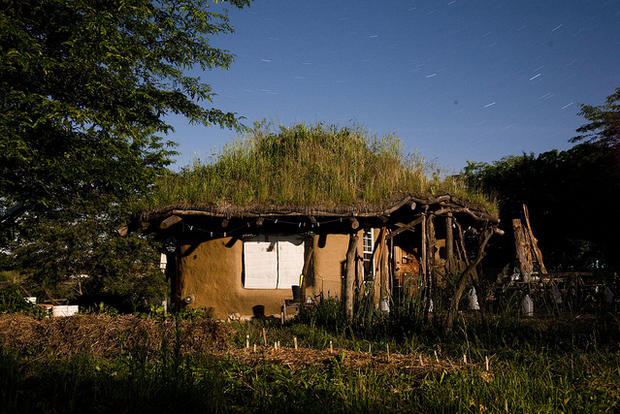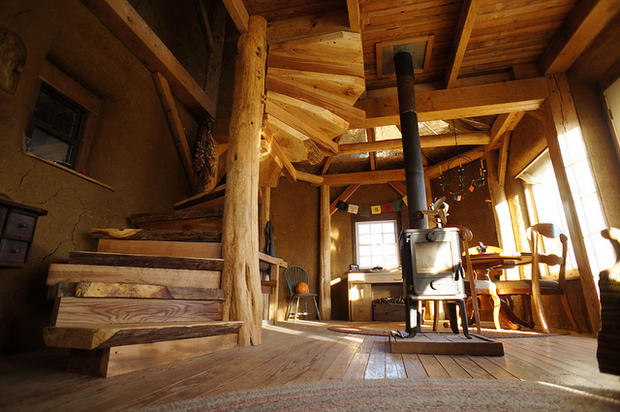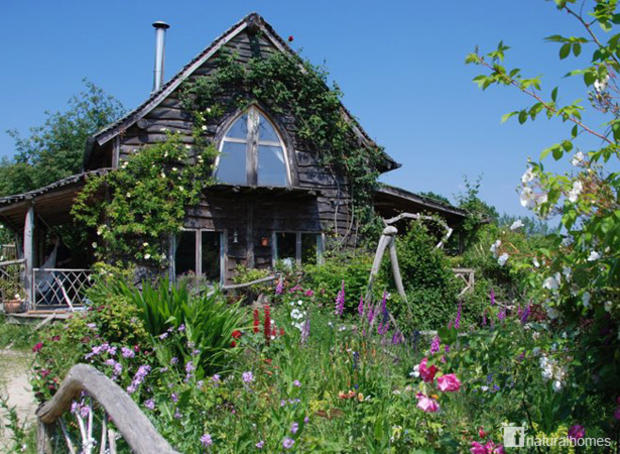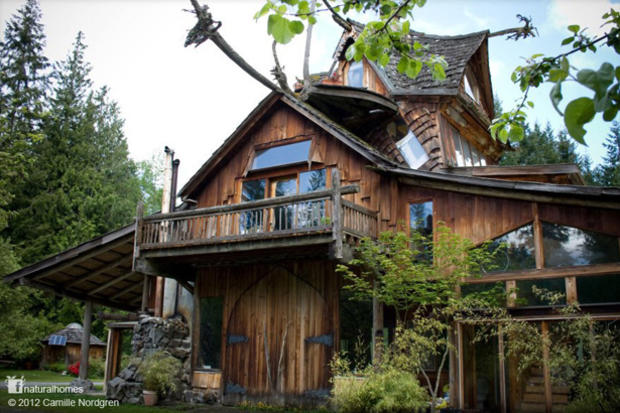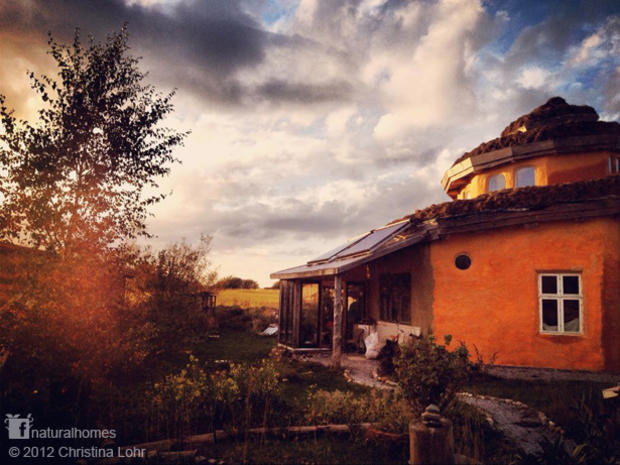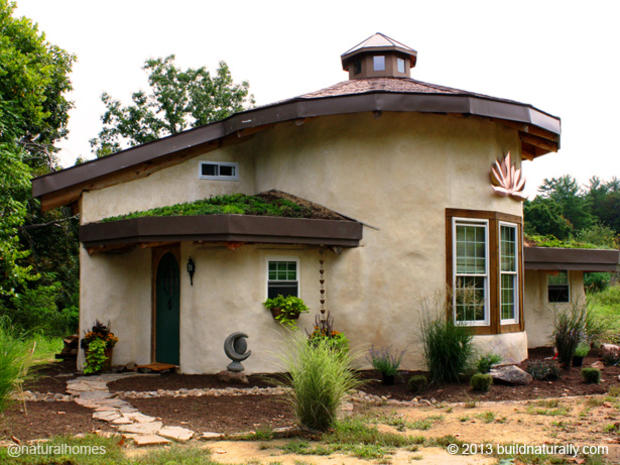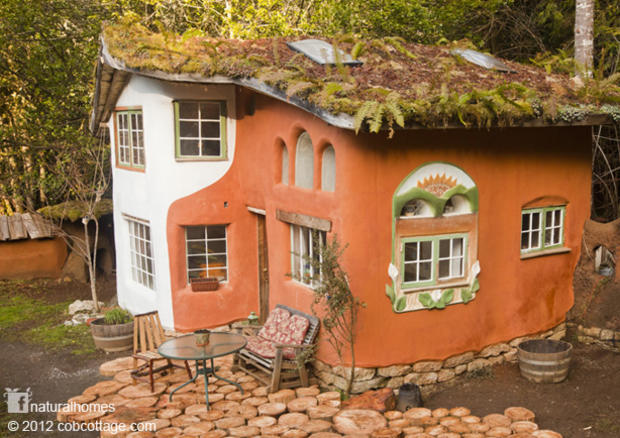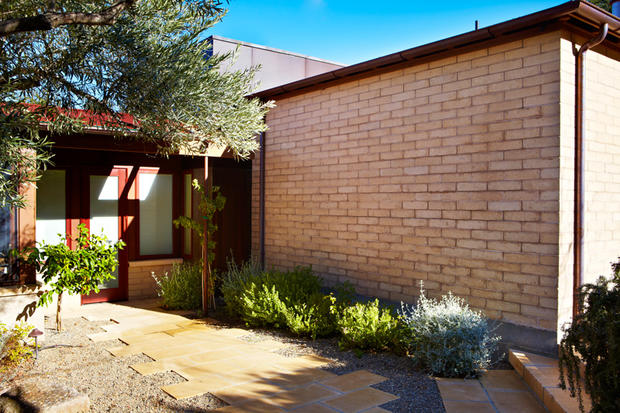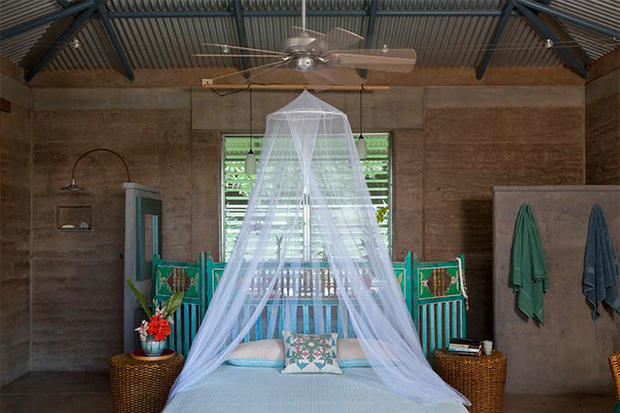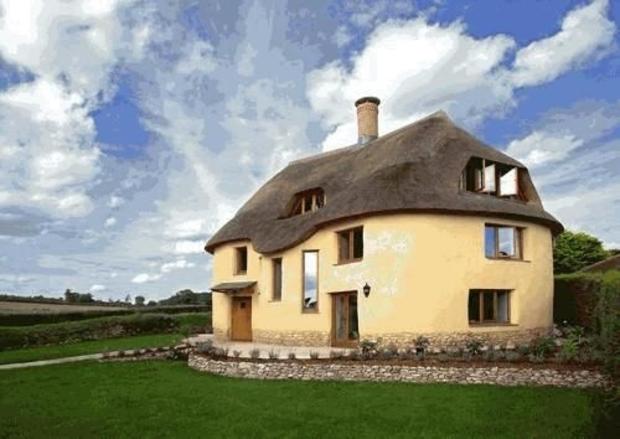Natural home building: 10 homes built by the earth
Editor's note: Pictures 4-8 courtesy of naturalhomes.org.
Forget about the usual building materials such as concrete, vinyl siding or pink foam insulation when it comes to Paulina Wojciechowska's home in Poland. Her humble abode was built from the earth, quite literally. The walls are made of sand, water, clay and straw. The roof is held up with wood beams.
Homes like Wojciechowska's are beyond green standards. They're made with completely natural materials, and they're attracting a legion of followers looking to break away from the pre-fab, wood-frame home.
One of the most popular natural building materials is called cob, which is created by taking the sand, water, clay and straw and mixing it -- often using your own two feet on a tarp -- until it is thoroughly combined. You then pile it up in layers to form the home's walls, said Alex Sumerall, owner of This Cob House, a cob instruction and construction company in Tennessee.
Sumerall first got involved with natural home construction because a natural home would help him cope with his allergies. Natural homes, after all, don't contain any toxic material. Think about asbestos or lead paint -- once common in home construction, both have since been systematically stripped from buildings because of their health risks.
Cob construction also appealed to Sumerall because it's accessible enough to turn anyone into a builder.
"It's really pretty easy," he said. "You can learn it on your own and it's an empowering experience. When you first figure it out -- it took me a while at first -- but once you get it, that's about it; you can go on your own and start building a home."
Though cob is simple and inexpensive to build, often created using the soil dug out to make the home's foundation, a cob home doesn't have much in the way of insulation.
Insulation, measured in R-value, on a typical home ranges from about 11 to 25 per foot, but the R-value on cob is about a 3, Sumerall said.
That means that cob homes built in colder climates can't be lived in year-round because it would be too expensive to heat them. Wojciechowska lives in hers during the summer, but has built other homes that can be lived in year round with her company, Earth Hands and Houses. For that she turns to straw bales, which actually have a higher R-value than standard construction insulation, and they go up quickly, she said.
Made by stacking up the bales, binding them together with wood pins or mesh wire, then plastering or stuccoing the bales, these homes can be built quickly and lived in year-round in any climate.
But just because the construction is rudimentary doesn't mean the home is.
Costs on these homes can range from $4 per square foot to $200 per square foot, depending on whether or not you want modern amenities such as electricity, plumbing, showers and toilets.
Not all natural home construction is cheap though: Rammed earth walls, which are exactly what they sound like, largely exist in the architectural handbook of the wealthy.
"The aesthetics of the wall is really driving the market to build with rammed earth," said David Easton, owner of Watershed Materials and Rammed Earth Works, two natural building companies.
California-based Easton, who has been building with natural materials since the 1970s, said that most of his projects are for Silicon Valley executives, using rammed earth construction. The barely-moist soil is placed inside wall forms, then rammed down with a jackhammer-like machine until it becomes hard. As these layers pile up, they take on the look and durability of stone.
"It's absolutely beautiful and structurally it's just like other masonry built out of concrete-type materials," he said. "It's durable and strong, able to resist the forces of nature, highly energy-efficient."
But, Easton admits, it's hard to compete with wooden-frame homes that can be built at mass for less. However, he's created an all-natural cinder block using similar methods as rammed earth. While it doesn't provide the same aesthetic appeal, it does provide the same health benefits at a lower cost.
Zoning and building codes also tend to gum up the works for natural home builders. Because there's frequently not an official building code for these types of homes, it takes a lot of education and persuasion on the part of the home builders to explain the concept to their local planning departments.
"Because of that, a lot of the time, people are trying to build in some cases without being found out," Sumerall said.
But over time, he and other natural home builders hope that as the concept gains momentum it also gains acceptance.
"The more people do it, the more people see it and understand it and then want it," Wojciechowska said.
Click on to see more examples of these unique buildings.

